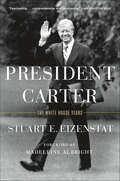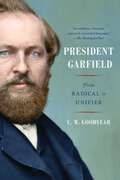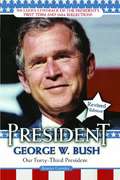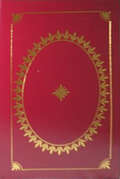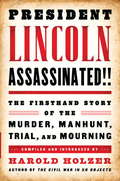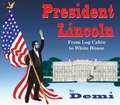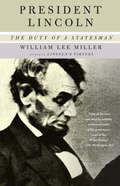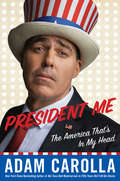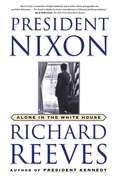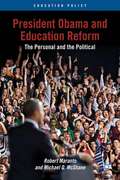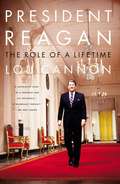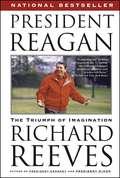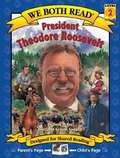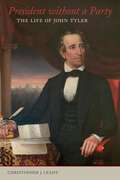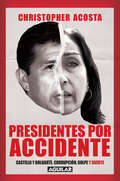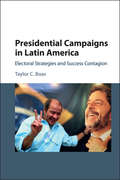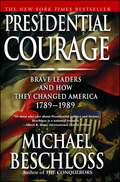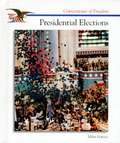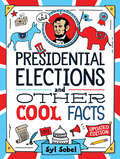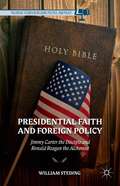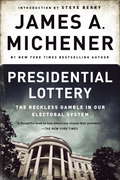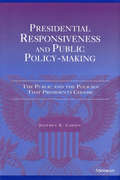- Table View
- List View
President Carter: The White House Years
by Stuart E. EizenstatThe definitive history of the Carter Administration from the man who participated in its surprising number of accomplishments—drawing on his extensive and never-before-seen notes.Stuart Eizenstat was at Jimmy Carter’s side from his political rise in Georgia through four years in the White House, where he served as Chief Domestic Policy Adviser. He was directly involved in all domestic and economic decisions as well as in many foreign policy ones. Famous for the legal pads he took to every meeting, he draws on more than 5,000 pages of notes and 350 interviews of all the major figures of the time, to write the comprehensive history of an underappreciated president—and to give an intimate view on how the presidency works. Eizenstat reveals the grueling negotiations behind Carter’s peace between Israel and Egypt, what led to the return of the Panama Canal, and how Carter made human rights a presidential imperative. He follows Carter’s passing of America’s first comprehensive energy policy, and his deregulation of the oil, gas, transportation, and communications industries. And he details the creation of the modern vice-presidency. Eizenstat also details Carter’s many missteps, including the Iranian Hostage Crisis, because Carter’s desire to do the right thing, not the political thing, often hurt him and alienated Congress. His willingness to tackle intractable problems, however, led to major, long-lasting accomplishments. This major work of history shows first-hand where Carter succeeded, where he failed, and how he set up many successes of later presidents.
President Garfield: From Radical to Unifier
by CW GoodyearAn &“ambitious, thorough, supremely researched&” (The Washington Post) biography of the extraordinary, tragic life of America&’s twentieth president—James Garfield.In &“the most comprehensive Garfield biography in almost fifty years&” (The Wall Street Journal), C.W. Goodyear charts the life and times of one of the most remarkable Americans ever to win the Presidency. Progressive firebrand and conservative compromiser; Union war hero and founder of the first Department of Education; Supreme Court attorney and abolitionist preacher; mathematician and canalman; crooked election-fixed and clean-government champion; Congressional chieftain and gentleman-farmer; the last president to be born in a log cabin; the second to be assassinated. James Abram Garfield was all these things and more. Over nearly two decades in Congress during a polarized era—Reconstruction and the Gilded Age—Garfield served as a peacemaker in a Republican Party and America defined by divisions. He was elected to overcome them. He was killed while trying to do so. President Garfield is American history at its finest. It is about an impoverished boy working his way from the frontier to the Presidency; a progressive statesman, trying to raise a more righteous, peaceful Republic out of the ashes of civil war; the tragically imperfect course of that reformation, and the man himself; a martyr-President, whose death succeeded in nudging the country back to cleaner, calmer politics.
President George W. Bush
by Beatrice GormleyOur new president, George W. Bush, once said: "I never dreamed about becoming president. When I was growing up, I wanted to be Willie Mays." George W. was born in 1946 and attended Yale University. As a young man, he trained as a fighter pilot in the Texas Air National Guard before beginning a career in business. He then turned to Texas politics and served as governor there from 1994 to 2000. This is the first biography for young people to be published about the forty-third president of the United States, George W. Bush. With up-to-the-minute information and quotes from our new president -- including details of the final days of the campaign and a description of the events from Election Day to acceptance speech -- this book is essential reading for every young student of American history.
President James Buchanan: A Biography
by Philip S. KleinThe man who elects to play the role of peacemaker may, if he succeeds, be soon buried in historical oblivion, for it is the perverse tendency of mankind to glorify war but to forget those who surmount crises by thought rather than by threat. A peacemaker who fails, on the other hand, is likely to receive for his efforts only resounding curses from both the warring camps. Such was the fate of James Buchanan.
President Lincoln Assassinated!!: The Firsthand Story of the Murder, Manhunt, Trial and Mourning
by Harold HolzerFor the 150th anniversary, Harold Holzer (The Civil War in 150 Objects) presents an unprecedented firsthand chronicle of one of the most pivotal moments in American history. On April 14, 1865, Good Friday, the Civil War claimed its ultimate sacrifice. President Lincoln Assassinated!! recaptures the dramatic immediacy of Lincoln's assassination, the hunt for the conspirators and their military trial, and the nation's mourning for the martyred president. The fateful story is told in more than eighty original documents--eyewitness reports, medical records, trial transcripts, newspaper articles, speeches, letters, diary entries, and poems--by more than seventy-five participants and observers, including the assassin John Wilkes Booth and Boston Corbett, the soldier who shot him. Courtroom testimony exposes the intricacies of the plot to kill the president; eulogies by Ralph Waldo Emerson, Wendell Phillips, and Benjamin Disraeli and poetry by Walt Whitman, Herman Melville and Julia Ward Howe give eloquent voice to grief; two emotional speeches by Frederick Douglass--one of them never before published--reveal his evolving perspective on Lincoln's legacy. Together these voices combine to reveal the full panorama of one the most shocking and tragic events in our history.
President Lincoln: From Log Cabin to White House
by DemiFrom a small log cabin in Kentucky to the steps of the White House, Abraham Lincoln rose from humble beginnings to the very height of prominence and prestige. Leading America through the momentous events of the Civil War, the Emancipation Proclamation, and the abolition of slavery, the story of "Honest Abe" is one that all children should know. Now award-winning author and illustrator, Demi, recounts Lincoln&’s incredible life story of courage, wisdom, and compassion as only she can. Filled with stunning illustrations, this book contains an appendix of fascinating facts and famous quotes from Lincoln&’s life, as well as a timeline and map. President Lincoln: From Log Cabin to White House is not only a powerful teaching tool, but an entertaining and age-appropriate introduction to a man who has become one of the most influential and admired presidents of the United States.
President Lincoln: The Duty Of A Statesman (Playaway Adult Nonfiction Ser.)
by William Lee MillerIn his acclaimed book Lincoln's Virtues, William Lee Miller explored Abraham Lincoln's intellectual and moral development. Now he completes his "ethical biography," showing how the amiable and inexperienced backcountry politician was transformed by constitutional alchemy into an oath-bound head of state. Faced with a radical moral contradiction left by the nation's Founders, Lincoln struggled to find a balance between the universal ideals of Equality and Liberty and the monstrous injustice of human slavery. With wit and penetrating sensitivity, Miller brings together the great themes that have become Lincoln's legacy--preserving the United States of America while ending the odious institution that corrupted the nation's meaning--and illuminates his remarkable presidential combination: indomitable resolve and supreme magnanimity.From the Trade Paperback edition.
President Me: The America That's in My Head
by Adam CarollaMy fellow Americans,President John F. Kennedy once famously said, "Hey, is that blond intern eighteen yet?" He also said, "Ask not what your country can do for you, but what you can do for your country."We've changed a lot since JFK asked us all to pitch in. We've become a nation of narcissistic, yoga-mat-toting, service-dog-having, absentee dads and gluten-free, hand-wringing, hypochondriac moms of overcaffeinated (yet somehow still lazy) twerking tweens. And our government is an inept bureaucracy incapable of doing anything except getting in our wallets and in our way. We've got to get it together, America.That is why I, Adam Carolla, hereby declare myself Candidate Carolla. The tome you hold in your hands is a statement of my intent to whip our country back into fighting shape, to eliminate the "what are you going to do for me?" mentality that has invaded our country.President Me is my manifesto, my vision for a better place . . . free of Big Government, barefoot fliers, lazy hipsters who'd rather "Occupy" than work, and the other things that are bringing our country down. With my cabinet appointees, my list of worthy and necessary presidential ManDates, and tons of great ideas for fixing our health care, education, energy, and even national parks systems . . . behold an America we can be proud of. The America I see in my head.You're welcome in advance.Your future leader,Adam
President Nixon: Alone in the White House
by Richard ReevesWho was Richard Nixon? The most amazing thing about the man was not what he did as president, but that he became president. In President Nixon, Richard Reeves has used thousands of new interviews and recently discovered or declassified documents and tapes -- including Nixon's tortured memos to himself and unpublished sections of H. R. Haldeman's diaries -- to offer a nuanced and surprising portrait of the brilliant and contradictory man alone in the White House. President Nixon is a startling narrative of a desperately introverted man who dreamed of becoming the architect of his times. Late at night, he sat upstairs in the White House writing notes to himself on his yellow pads, struggling to define himself and his goals: "Compassionate, Bold, New, Courageous...Zest for the job (not lonely but awesome). Goals -- reorganized govt...Each day a chance to do something memorable for someone. Need to be good to do good...Need for joy, serenity, confidence, inspiration." But downstairs he was building a house of deception. He could trust no one because in his isolation he thought other people were like him. He governed by secret orders and false records, memorizing scripts for public appearances and even for one-on-one meetings with his own staff and cabinet. His principal assistants, Haldeman and Henry Kissinger, spied on him as he spied on them, while cabinet members, generals, and admirals spied on all of them -- rifling briefcases and desks, tapping each other's phones in a house where no one knew what was true anymore. Nixon's first aim was to restore order in an America at war with itself over Vietnam. But in fact he prolonged the fighting there, lying systematically about what was happening both in the field and in the peace negotiations. He startled the world by going to communist China and seeking détente with the Soviet Union -- and then secretly persuaded Mao and Brezhnev to lie for him to protect petty White House secrets. Still, he was a man of vision, imagining a new world order, trying to stall the deadly race war he believed was inevitable between the West, including Russia, and Asia, led by China and Japan. At home, he promised welfare reform, revenue sharing, drug programs, and environmental protection, and he presided, reluctantly, over the desegregation of public schools -- all the while declaring that domestic governance was just building outhouses in Peoria. Reeves shows a presidency doomed from the start. It begins with Nixon and Kissinger using the CIA to cover up a 1969 murder by American soldiers in Vietnam that led to the theft and publication of the Pentagon Papers, then to secret counterintelligence units in the White House and finally to the burglaries and cover-up that came to be known as Watergate. Richard Reeves's President Nixon will stand as the authoritative account of Nixon in the White House. It is an astonishing story.
President Obama and Education Reform
by Robert Maranto Michael Q. McshanePresident Obama and Education Reform offers a comprehensive description and analysis of President Obama's education agenda. The Obama administration has created numerous interlocking policies meant to foster class mobility and long-term economic growth through educational improvements. The administration has imposed the Common Core as de facto national standards, an innovation desired by reformers for decades. Through Race to the Top (RTT) funds, the administration has also encouraged the spread of teacher-level value-added data systems, encouraged the use of merit pay, and pushed states to help spread high-quality charter schools. Obama's reforms have drawn skepticism from supporters of traditional public schools. Robert Maranto and Michael McShane have a more positive view. They believe that the Obama-era reforms reflect long-term changes in ideology and technology which have led to successful innovation in both the private and public sector, and believe that Obama's personal background as a community organizer has informed his reform strategies for the better.
President Reagan: The Role Of A Lifetime
by Lou CannonHailed by The New York Times as the best study of that enigmatic presidency, Lou Cannon's President Reagan remains the definitive account of our most significant presidency in the last fifty years. Only veteran journalist Lou Cannon, who covered Reagan for more than twenty-five years, can take us deep behind the scenes of the oval office. In this thoroughly revised and updated paperback edition, Cannon reveals the true nature of the man behind the performer, the life behind the legend.
President Reagan: The Triumph of Imagination
by Richard ReevesTwenty-five years after Ronald Reagan became president, Richard Reeves has written a surprising and revealing portrait of one of the most important leaders of the twentieth century. As he did in his bestselling books President Kennedy: Profile of Power and President Nixon: Alone in the White House, Reeves has used newly declassified documents and hundreds of interviews to show a president at work day by day, sometimes minute by minute. President Reagan: The Triumph of Imagination is the story of an accomplished politician, a bold, even reckless leader, a gambler, a man who imagined an American past and an American future -- and made them real. He is a man of ideas who changed the world for better or worse, a man who understands that words are often more important than deeds. Reeves shows a man who understands how to be President, who knows that the job is not to manage the government but to lead the nation. In many ways, a quarter of a century later, he is still leading. As his vice president, George H. W. Bush, said after Reagan was shot and hospitalized in 1981: "We will act as if he were here." He is a heroic figure if not always a hero. He did not destroy communism, as his champions claim, but he knew it would self-destruct and hastened the collapse. No small thing. He believed the Soviet Union was evil and he had contempt for the established American policies of containment and détente. Asked about his own Cold War strategy, he answered: "We win. They lose!" Like one of his heroes, Franklin D. Roosevelt, he has become larger than life. As Roosevelt became an icon central to American liberalism, Reagan became the nucleus holding together American conservatism. He is the only president whose name became a political creed, a noun not an adjective: "Reaganism." Reagan's ideas were so old they seemed new. He preached an individualism, inspiring and cruel, that isolated and shamed the halt and the lame. He dumbed-down America, brilliantly blending fact and fiction, transforming political debate into emotion-driven entertainment. He recklessly mortgaged America with uncontrolled military spending, less taxation, and more debt. In focusing on the key moments of the Reagan presidency, Reeves recounts the amazing resiliency of Ronald Reagan, the real "comeback kid." Here is a seventy-year-old man coming back from a near-fatal gunshot wound, from cancer, from the worst recession in American history. Then, in personal despair as his administration was shredded by the lying and secrets of hidden wars and double-dealing, he was able to forge one of history's amazing relationships with the leader of "the Evil Empire." That story is told for the first time using the transcripts of the Reagan-Gorbachev meetings, the climax of an epic story -- as if he were here.
President Theodore Roosevelt (We Both Read)
by Sindy MckayA perfect book about our 26th President for young readers! The book covers his life and many accomplishments, demonstrating how, through hard work and dedication, he helped to make the United States a better country for all of us.
President without a Party: The Life of John Tyler
by Christopher J. LeahyHistorians have long viewed President John Tyler as one of the nation’s least effective heads of state. In President without a Party—the first full-scale biography of Tyler in more than fifty years and the first new academic study of him in eight decades—Christopher J. Leahy explores the life of the tenth chief executive of the United States. Born in the Virginia Tidewater into an elite family sympathetic to the ideals of the American Revolution, Tyler, like his father, worked as an attorney before entering politics. Leahy uses a wealth of primary source materials to chart Tyler’s early political path, from his election to the Virginia legislature in 1811, through his stints as a congressman and senator, to his vice-presidential nomination on the Whig ticket for the campaign of 1840. When William Henry Harrison died unexpectedly a mere month after assuming the presidency, Tyler became the first vice president to become president because of the death of the incumbent. Leahy traces Tyler’s ascent to the highest office in the land and unpacks the fraught dynamics between Tyler and his fellow Whigs, who ultimately banished the beleaguered president from their ranks and stymied his election bid three years later. Leahy also examines the president’s personal life, especially his relationships with his wives and children. In the end, Leahy suggests, politics fulfilled Tyler the most, often to the detriment of his family. Such was true even after his presidency, when Virginians elected him to the Confederate Congress in 1861, and northerners and Unionists branded him a “traitor president.” The most complete accounting of Tyler’s life and career, Leahy’s biography makes an original contribution to the fields of politics, family life, and slavery in the antebellum South. Moving beyond the standard, often shortsighted studies that describe Tyler as simply a defender of the Old South’s dominant ideology of states’ rights and strict construction of the Constitution, Leahy offers a nuanced portrayal of a president who favored a middle-of-the-road, bipartisan approach to the nation’s problems. This strategy did not make Tyler popular with either the Whigs or the opposition Democrats while he was in office, or with historians and biographers ever since. Moreover, his most significant achievement as president—the annexation of Texas—exacerbated sectional tensions and put the United States on the road to civil war.
Presidentes por accidente: Castillo y Boluarte. Corrupción, golpe y suerte
by Christopher AcostaEL MEJOR PERIODISTA DE INVESTIGACIÓN TRAS LA HUELLA DEL ACCIDENTE QUE LLEVÓ A PEDRO CASTILLO Y DINA BOLUARTE A LA PRESIDENCIA Si a Pedro Castillo lo conocíamos poco, a Dina Boluarte, menos. ¿Quién es la mujer que, tras un fallido golpe de Estado, asume el poder del país? ¿Quién el hombre que intenta retenerlo, convencido de una traición de quien lo sucede? Presidentes por accidente, la nueva investigación periodística de Christopher Acosta -autor del bestseller Plata como cancha-, nos revela detalles hasta ahora desconocidos, no solo de las biografías y las personalidades de Castillo y Boluarte, sino de cómo estas explican las controvertidas decisiones que adoptaron tras colocarse la banda presidencial. Boluarte llega a la presidencia ahorrándose aquello que más temen los candidatos de una campaña electoral: el escrutinio de sus actos públicos y sus vidas privadas. Este libro llena ese vacío. Acorralado por las investigaciones en su contra, Castillo cierra su paso por el Gobierno con un número temerario y espectacular: el de un clavadista que se lanza a una piscina que sabe sin agua. Pero ¿son en verdad ambos personajes tan diferentes como se presentan? Estas páginas delinean el doble perfil de nuestros dos últimos presidentes, pero son también una apasionante crónica política colmada de intrigas, traiciones y corrupción. Una historia que demuestra que para Castillo y Boluarte la presidencia es algo que les sucede: un acontecimiento en sus vidas.
Presidential Campaigns in Latin America: Electoral Strategies And Success Contagion
by Boas Taylor C.How do presidential candidates in new democracies choose their campaign strategies, and what strategies do they adopt? In contrast to the claim that campaigns around the world are becoming more similar to one another, Taylor Boas argues that new democracies are likely to develop nationally specific approaches to electioneering through a process called success contagion. The theory of success contagion holds that the first elected president to complete a successful term in office establishes a national model of campaign strategy that other candidates will adopt in the future. He develops this argument for the cases of Chile, Brazil, and Peru, drawing on interviews with campaign strategists and content analysis of candidates' television advertising from the 1980s through 2011. The author concludes by testing the argument in ten other new democracies around the world, demonstrating substantial support for the theory.
Presidential Courage: Brave Leaders and How They Changed America 1789-1989
by Michael R. BeschlossFrom the acclaimed bestselling author of The Conquerors Michael Beschloss has brought us a brilliantly readable and inspiring saga about crucial times in America's history when a courageous President dramatically changed the future of the United States. With surprising new sources and a dazzling command of history and human character, Beschloss brings to life these flawed, complex men -- and their wives, families, friends and foes. Never have we had a more intimate, behind-the-scenes view of Presidents coping with the supreme dilemmas of their lives. You will be in the room with the private George Washington, braving threats of impeachment and assassination to make peace with England. John Adams, incurring his party's "unrelenting hatred" by refusing to fight France and warning his enemies, "Great is the guilt of an unnecessary war." Andrew Jackson, in a death struggle against the corrupt Bank of the United States. Abraham Lincoln, risking his Presidency to insist that slaves be freed. Beschloss also shows us Theodore Roosevelt, taunting J. P. Morgan and the Wall Street leaders who dominated his party. Franklin Roosevelt, defying the isolationists -- and maybe the law -- to stop Adolf Hitler. Harry Truman, risking a walkout by top officials to recognize a Jewish state. John Kennedy, the belated champion of civil rights, complaining that he has cost himself a second term. And finally, two hundred years after Washington, Ronald Reagan, irking some of his oldest backers to seek an end to the Cold War. As Beschloss shows in this gripping and important book, none of these Presidents was eager to incur ridicule, vilification or threats of political destruction and even assassination. But in the end, bolstered by friends and family, hidden private beliefs and, sometimes, religious faith, each ultimately proved himself to be, in Andrew Jackson's words, "born for the storm."
Presidential Decrees in Russia
by Thomas F. RemingtonThe book examines the way Russian presidents Yeltsin, Medvedev, and Putin have used their constitutional decree powers since the end of the Soviet regime. The Russian constitution gives the Russian president extremely broad decree-making power, but its exercise is constrained by both formal and informal considerations. The book compares the Russian president's powers to those of other presidents, including the executive powers of the United States president and those of Latin American presidents. The book traces the historical development of decree power in Russia from the first constitution in 1905 through the Soviet period and up to the present day, showing strong continuities over time. It concludes that Russia's president operates in a strategic environment, where he must anticipate the way other actors, such as the bureaucracy and the parliament, will respond to his use of decree power.
Presidential Elections (Cornerstones of Freedom)
by Miles HarveyExamines how presidential elections have changed over the past 200 years, discussing topics such as primaries, national conventions, television campaigns, and funding.
Presidential Elections and Other Cool Facts
by Syl Sobel J.D.Give kids the most important and interesting facts about presidential elections with this easy-to-understand primer!Perfect for classrooms, homeschool, and curious young readers, this book features:Simple, kid-friendly languageClear explanations of complex questionsIllustrations that help bring the text to lifeAdditional resources like a glossary, index, and more!Presidential Elections and Other Cool Facts is an easy-to-read guide for kids about how our country chooses its leader, answering questions like: Who can run? Who can vote? What is the electoral college? It's also packed with fascinating facts about previous presidents, notable candidates, and remarkable elections in history.
Presidential Faith and Foreign Policy
by William StedingThroughout the Cold War the religious beliefs of presidents and the connection of those beliefs to foreign policy produced curiosities but little scholarship. The subject was most often sequestered behind the presumptive veil of the separation of church and state, or otherwise set aside due to methodological concerns. Since 9/11, religion has become a subject that cannot be ignored. Western inquiries of Islam and the religious rhetoric of George W. Bush made religion central to foreign affairs. However, as Presidential Faith and Foreign Policy shows, religion has been fully ensconced in the political sphere since the presidency of Jimmy Carter, and he and his successor Ronald Reagan - both self-professed born-again Christians - applied their particular religious interpretations to their leadership of the United States and its international affairs.
Presidential Leadership in Public Opinion
by Jeffrey E. CohenAlthough presidents may have a difficult time actually leading the public and Congress, voters still desire strong leadership from their commander in chief. In Presidential Leadership in Public Opinion, Jeffrey E. Cohen argues that the perception of presidential leadership in American politics is affected not so much by what presidents accomplish but by whether voters think their president is a good leader. When assessing whether a president is a good leader, voters ask two questions: Does the president represent me and the nation? And, is the president strong? Cohen shows that presidential interactions with Congress affect voter perceptions of presidential representation and strength. These perceptions have important implications for public attitudes about American politics. They affect presidential approval ratings, the performance of candidates in presidential elections, attitudes toward Congress, and trust in government. Perceptions of presidential leadership qualities have implications not only for the presidency but also for the larger political system.
Presidential Lottery
by James A. Michener Steve BerryIn this eye-opening nonfiction account, world-renowned author James A. Michener details the reckless gamble U.S. voters make every four years: trusting the electoral college. In 1968, Michener served as a presidential elector in Pennsylvania. What he witnessed that fall disturbed him so much that he felt compelled to expose the very real potential in this system for a grave injustice with history-altering consequences. Incorporating the wide-ranging insight and universal compassion of Michener's bestselling novels, Presidential Lottery is essential reading for every American concerned about the ever-growing rift between the people and the political process. Praise for Presidential Lottery "Clear, concise, and sensible . . . a thoughtful book on how Americans choose their President."--The New York Times "An urgent appeal."--Kirkus ReviewsFrom the Trade Paperback edition.
Presidential Power: The Politics of Leadership with Reflections on Johnson and Nixon
by Richard E. NeustadtBased on an underlying theme of Presidential weakness, this book characterizes the powers of a modern American president in terms of his personal influence on government action.
Presidential Responsiveness and Public Policy-making
by Jeffrey E. CohenFrom routine operations to the workings of a White House in crisis, this comprehensive, best-selling text examines all aspects of the presidency in rich detail. With a special emphasis on policy, the new edition surveys the most up-to-date scholarship on the topic, and includes an examination of the groundbreaking 2008 presidential election. Taking a theoretical approach, the authors use engaging analysis and timely, fascinating examples to view the presidency from two theoretical standpoints--the president as "facilitator," and the president as "director of change."
